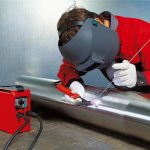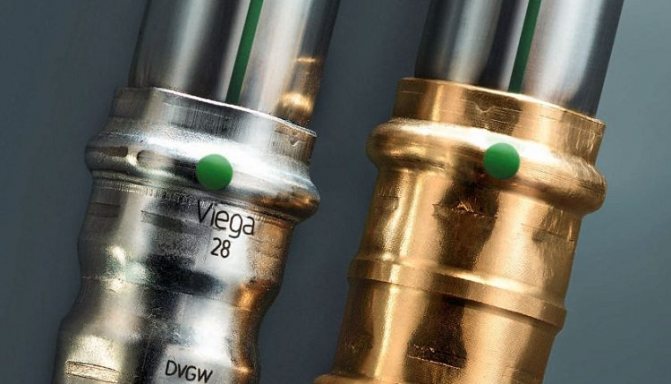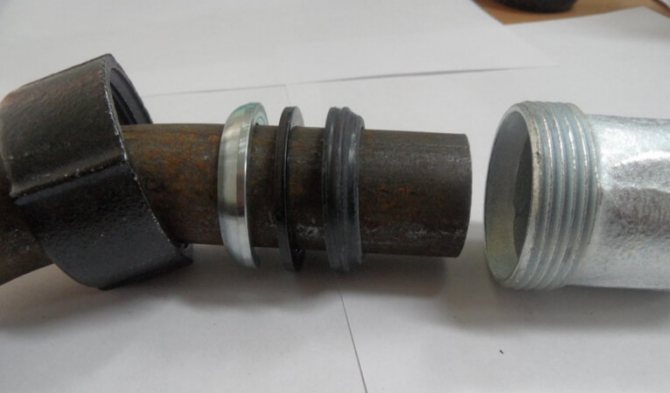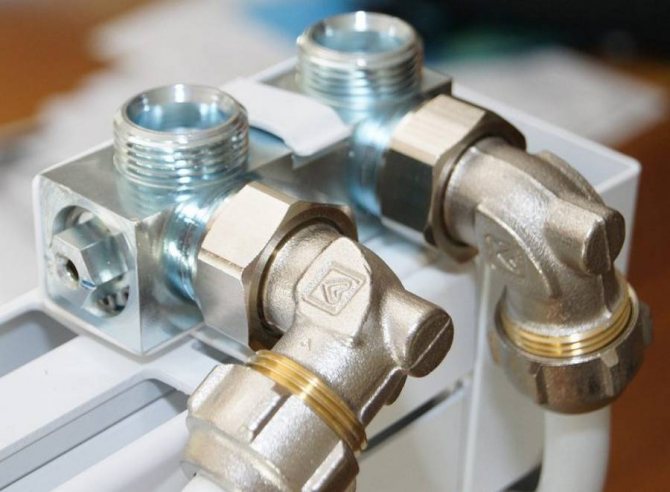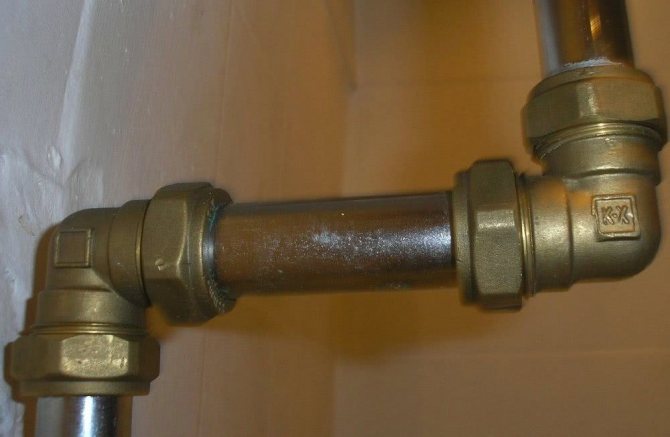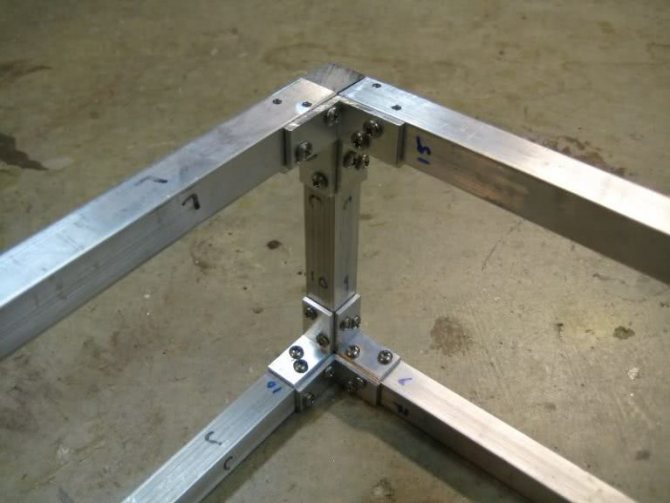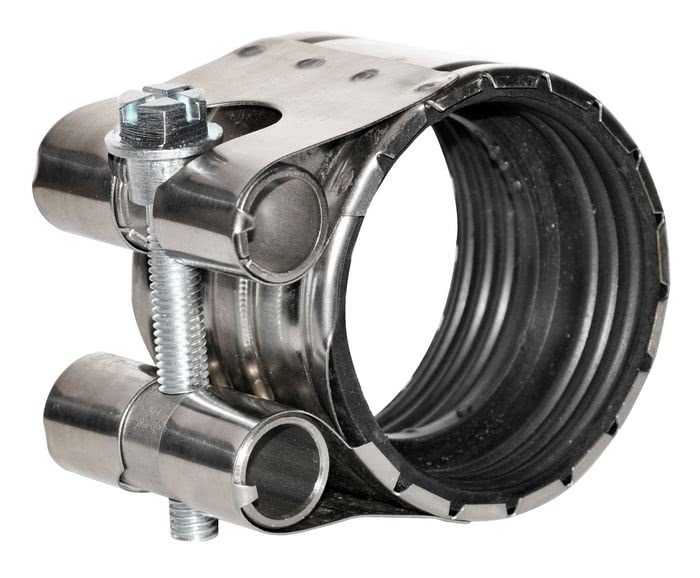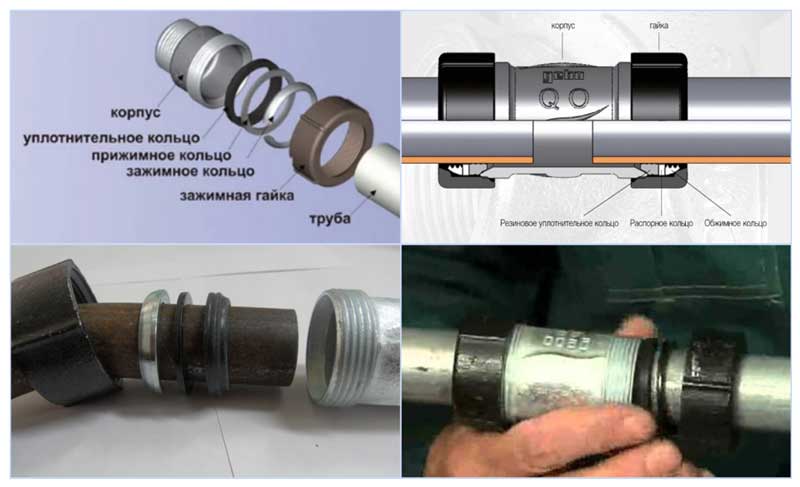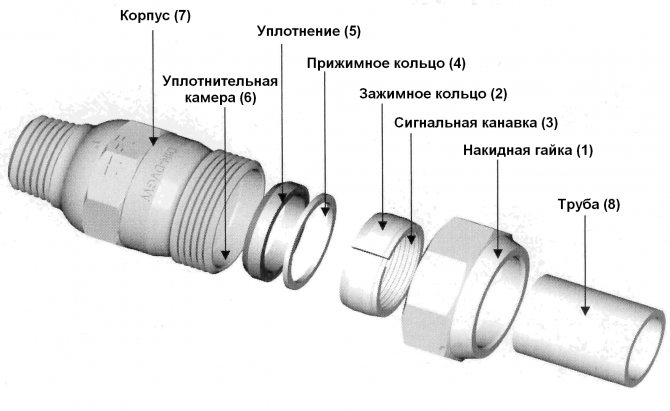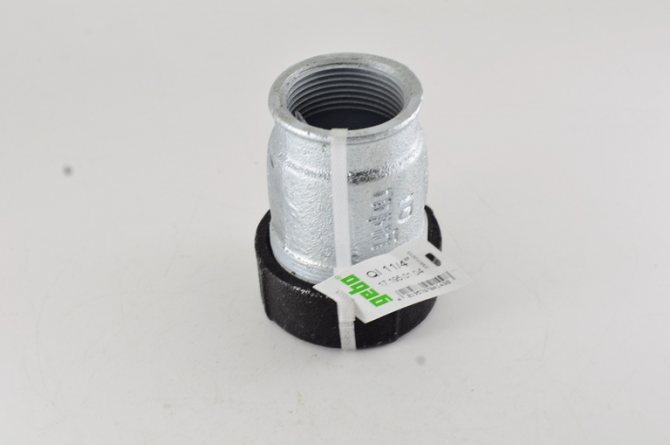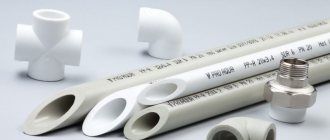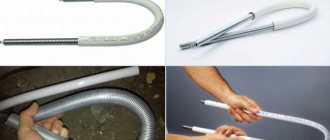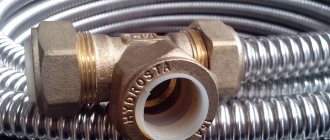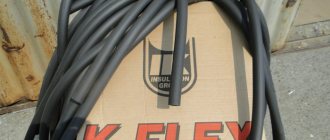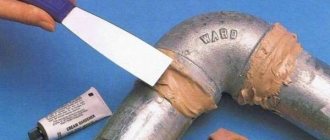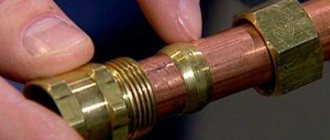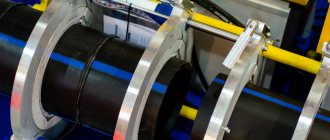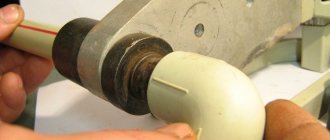Pros and cons of welding
This method produces a strong, leak-proof connection. Its advantages also include:
- there is no weighting of the system with additional parts;
- automation of the process;
- for welding, there is no need to specially level the cut edge;
- suitable for systems of non-standard section elements: square. rectangular, oval. The connection of non-circular steel pipes on the thread is not possible.
Welding work is usually performed by a specialist and requires special equipment. Residual stresses arising at the joints can lead to depressurization of the seams under mechanical stress, vibrations. When repairs are required, the welded parts can only be cut off. It is technologically difficult to weld different metals (steel / cast iron), and different materials (steel / PVC) are impossible. It is impossible to weld steel pipes with copper, aluminum.

Working with a welding machine
Threaded Connection Methods
All non-threaded connection methods are divided into 2 large groups: welding methods and non-threaded and welding methods.
Welding, in turn, are classified into subspecies:
- fusion welding;
- pressure welding.
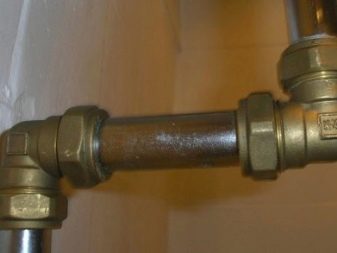

Threadless Weldless Methods:
- connection using couplings;
- connection using Gebo fitting;
- flange connection;
- tension connection.
Pros and cons of a fitting connection
A fitting connection provides a number of advantages without changing the requirements for tightness of joints:
- all docking points are easy, quick to change;
- you can make changes to the system yourself by changing the type of fitting;
- if the pipeline breaks down, the fittings can be reused;
- no expensive special equipment is required;
- pipes made of different materials can be connected.
The disadvantages are the impossibility of connecting the cuts with the angular section, the weighting of the system with additional elements. Such a connection will serve for a long time with strict adherence to the installation technology.
Output
The article described in detail the possible ways of connecting pipes made of metal, in particular copper and cast iron. Each method has its own characteristics, therefore it is used in certain cases (see also the article "Electrowelded pipe: technical parameters and scope").
The video in this article will help you find additional information on this topic.
Did you like the article? Subscribe to our channel Yandex.Zen
Welding technology
Welding works are carried out using welding machines. Additionally, transformers (rectifiers) and a set of electrodes are used in electric welding. It is imperative to carry out work only in protective equipment.
In all types of welding, pipe sections are preliminarily prepared for the seams to be welded: clean, cut off the flange, degrease, remove rust, paint.
Further, the process depends on the welding method:
- The gas method involves the use of a welding wire, with which the seam is filled in one go. In order to immediately get a high-quality result, you must have special training. If, for technological reasons, the outer seam does not provide the necessary tightness, an inner seam is performed in front of it. Optimal for pipes with wall thickness up to 4 mm;
- The electric arc method requires alignment, installation in tacks of pipeline elements.This is because the work is done in parts. The seam is formed layer by layer. For each stage, a larger diameter electrode is taken. The method is used for thick-walled pipes;
- Welding in a protective environment is the most efficient way. A mixture of gases acts as a protection: argon, oxygen, carbon dioxide. The seam is neat and durable.
After welding in any way, the seam is cleaned of slag deposits, its tightness is checked. Welded joints are durable and aesthetically pleasing.


Weld
Welding methods for joining pipes
Welding is great when you need to make a threadless connection of square pipes.
The most popular welding method is electric arc welding.
To implement it, you must perform the following steps:
- at the site of the future seam, you need to make chamfers on the pipe;
- obligatory cleaning with sandpaper of the place of the proposed joint (from a coarse abrasive to a smaller one);
- direct connection of pipes by welding, that is, metal melting using an electric current;
- cleaning the resulting weld with sandpaper (from coarse to fine).
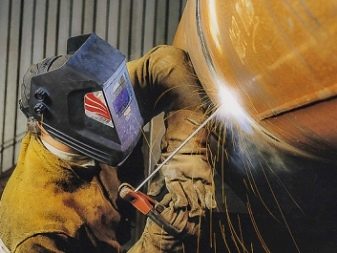

The advantage of this method is the relative simplicity of the process., tightness of steel pipes, the ability to use for pipes of any shape and diameter. But it is worth remembering that after welding, residual stresses remain in the welded seams, which can destroy your connection under heavy loads or vibrations. Welding is also not suitable when joining copper, aluminum and plastic pipes. But it can be used to cut copper or aluminum pipes without waste using an autogen, thereby completing the preparatory work for the fitting without using additional tools and equipment.
Couplings and their installation
In the threadless method, compression iron, metal-plastic, steel couplings, Gebo crimp couplings are used.
Compression couplings have an O-ring, union nut. They do not provide complete reliability of fastening: with mechanical force, the pipe can be pulled out of the coupling. They are installed either as a temporary option during the repair phase, or where no external impact is expected.
Gebo crimp couplings have three rings:
- clamping;
- sealing;
- clamping.
All elements are housed in a metal case, and together with a clamping nut, they form a common device Such a coupling is effective when connecting steel structures with plastic, PVC pipelines. Scope of application: water pipelines, sewerage and gas systems where the pressure does not exceed 0.4 MPa. The positive aspects of using the Gebo clutch include:
- versatility of use;
- does not undergo elastic deformation;
- the declared warranty period of use is more than 10 years;
- a deviation of 30 does not affect the quality of the connection;
- there is no internal stress;
- there is no metal fatigue.
Original Gebo couplings are sold necessarily with a passport.


Coupling connection
Flange connection application
The main task of a flange fitting is to create a sealed joint between two pipes with a diameter of ≥32 mm.
Oval flanges are used in public utilities such as sewer pipes and ventilation.
In various areas of production, for example, gas or chemical, only round flanges are used.
Flanges made of alloyed, in particular, stainless steel, are used for pipelines that work with aggressive media (sea water, acids, alkalis, alcohols, oil refined products).
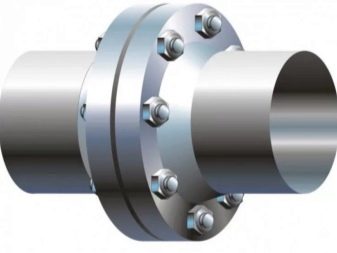

Flange fittings can be used at a pressure not exceeding 4 MPa and with an operating temperature not exceeding 3000 ° C.
With the help of a flange, you can not only make a connection, but also plug a water or gas pipe.
An unambiguous advantage is the fact that it is possible to interconnect not only steel or cast iron pipes, but also metal and plastic pipes.
Step-by-step connection instructions
How to connect pvc pipe to metal
It is necessary to fasten plastic and metal pipes in the following sequence:
- Choosing a connection method;
- We measure the inner and outer diameter of the connected products;
- We purchase all the appropriate fittings (pay special attention to the type of thread - internal or external;
- We apply markings on the pipeline;
- Cut the edge of the plastic pipe as straight as possible and clean the metal one, if necessary, cut off the old one and apply a new thread;
- We place a sealing gasket on the metal part;
- We fasten the necessary fitting to it, or attach the flange;
- In the case of a flange connection, we move the flange to the gasket and connect it to the other flange with pins or bolts;
- In the case of a threaded connection, the metal part is cleaned, a sealant or fum tape is applied, the fitting is screwed manually, the edge of the plastic pipe is installed in the counterpart, if necessary, it is welded;
- We check the connection for leaks.
How to connect a metal pipe with metal-plastic
It is optimal to connect metal-plastic to metal with a compression fitting. The sequence of actions in stages:
- We clean steel threads from rust and dirt;
- Apply a layer of insulation (tow, fum tape);
- We screw the fitting onto the metal pipe using a spanner or gas wrench;
- We put a press washer together with a nut on the edge of a metal-plastic pipe and calibrate it;
- We place the end of the metal-plastic pipe on the fitting screwed to the metal;
- Using the wrench, tighten the crimp nut tightly.
How to switch from a metal pipe without a thread to a plastic pipe
In some situations, the plastic pipe needs to be connected to an unthreaded metal piece. And here there are 2 options - either use the aforementioned ferrule for threadless connections, or apply the thread yourself.


For self-threading, you will need a special thread carrier tool (thread cutter). There are electrical and mechanical models on sale. The electric version includes several cutters for pipes of different diameters. Such a model is more convenient and lighter than a mechanical one, but it costs much more.
Hand tools are cheaper, but work with them requires considerable physical strength and a certain skill.
Rules for using a thread cutter:
- Do not use the tool when the pipe is located near walls;
- When working with a manual machine, the sequence of movements should be strictly observed - half a turn forward, then a quarter back, and so on along the entire length of the thread;
- An electric tool heats up quickly, it needs rest from time to time;
- Before cutting, the metal must be cleaned;
- The resulting threaded grooves must be lubricated with grease or other grease
